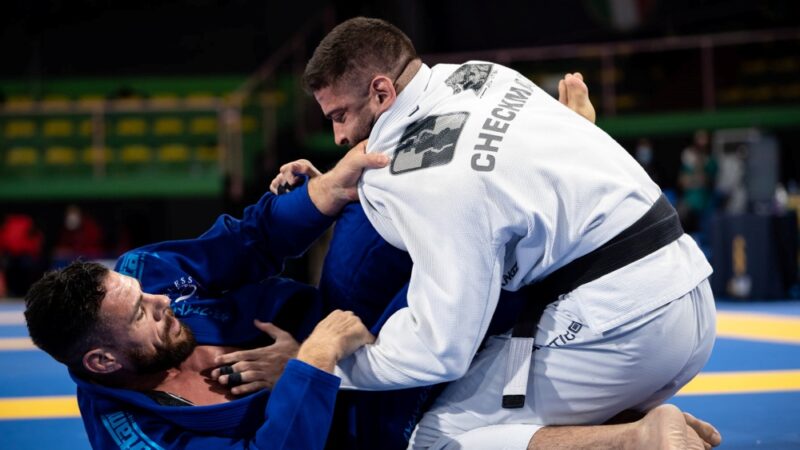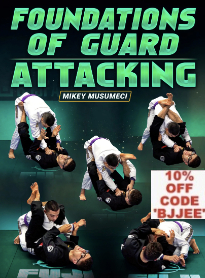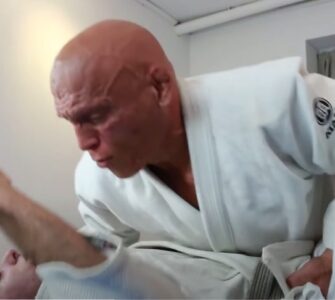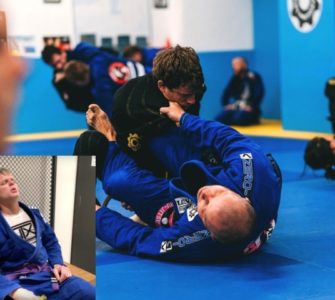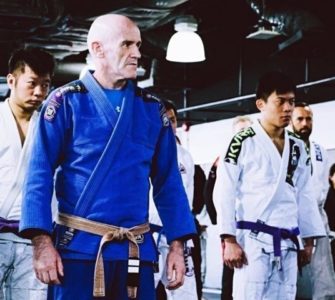Guest post by Evolve MMA, Asia’s premier championship brand for martial arts. It has the most number of World Champions on the planet. Named as the #1 ranked martial arts organization in Asia by CNN, Yahoo! Sports, FOX Sports, Evolve MMA is the top rated BJJ gym in Singapore.
One of the best aspects of training Brazilian Jiu-Jitsu is the sheer number of guards you can play. The guard is a defensive position where you use your body as a shield to prevent attacks. From there, you can transition to more offensive techniques like sweeps and submissions.
One of the most essential guards in BJJ is the venerable collar sleeve guard. It is a classic in every sense of the word and has been used for decades. Today, we’ll explore this guard in detail.
What Is The Collar Sleeve Guard?
The collar sleeve https://www.youtube.com/watch?v=PKQEms4w9T4&feature=emb_titleguard is characterized by establishing collar control and a sleeve grip on one side. By getting these grips, you can control the upper body of your opponent, which makes it easier for you to use off-balancing techniques (kuzushi) by pulling the gi towards you. The legs can be positioned in several ways. The most common position is to place the foot on your opponent’s hips.
This is perhaps the most basic one and is typically taught to beginners. As you become more experienced, you’ll naturally transition your leg position to other guards like the De La Riva and lasso, depending on the reaction of your opponents.
In this video, BJJ black belt Jon Thomas demonstrates the basics of the collar sleeve guard. Notice that he emphasized that it is expected to switch leg positions based on how the top player reacts.
He also advised extending your right leg to your opponent’s bicep (similar to how you’d do it with the spider guard) or even near the shoulder. This adds an additional layer of defense on your part and is definitely an annoyance to the guard passer.
If you get your right leg trapped, it is a good idea to transition to the lasso guard on the opposite side. This transition is critical because it prevents the x pass and knee cut, both common counters from the position. You can then go back to framing near the bicep/shoulder after this. Think of these adjustments as the starting position of your collar sleeve game.
Sample Attacks From The Collar Sleeve Guard
Now that we have tackled the basics of maintaining the guard let’s move on to common attacks. The most straightforward attack you can do from this position is the omoplata.
To define, the omoplata is a shoulder lock where you use your legs to isolate the opponent’s arm. The finish is similar to a kimura, where you force the arm towards the back of your opponent’s head. The great thing about using the omoplata is that it can also be used to sweep opponents.
Instead of finishing the submission by cranking the arm, allow the opponent to roll on their back to complete the sweep. Extend the opponent’s right arm from the collar sleeve guard by pulling the sleeves. This will give you the room to shoot your leg near the armpit and lock the omoplata.
You can also use the overhead sweep from the collar sleeve guard. This sweep is particularly useful if your opponent steps forward to maintain balance. From the collar sleeve position, remove your right foot that’s framing near the bicep and place it to your opponent’s midsection. Pull the collar and sleeve near your chest, lift up and do a back roll. This is a high percentage sweep that can catch many people off guard.
Note that this is just the tip of the iceberg as far as attacks go. Start by working on these two attacks. You can explore other options as you gain more experience. Remember that one or two sharp techniques are better than ten dull ones.
Effective Drills To Improve Your Collar Sleeve Guard
The collar sleeve guard can be dynamic as you need to be mindful of your opponent’s defenses. With this, it is important to drill your entries, retention, and transitions as best as possible. To jumpstart your journey towards mastery, here are a few drills to help improve your technique. Kudos to BJJ World for the excellent breakdown.
Drill 1: Hip Elevation And Leg Pummeling
This drill can help beginners understand the value of angles to maintain guard. It is common for guard passers to move from side to side to pass the guard. Therefore it is always a good idea to follow your opponent if you’d like to keep them inside your guard.
Elevate your hips while your opponent moves from one side to another, don’t forget to disrupt their balance by pulling on the collar as they move. Also, make sure to be active with your framing leg. Pummel and go back to the bicep/shoulder at all times.
Drill 2: Overhead Sweep
This is an excellent drill to master the overhead sweep. Start by moving your right foot from the bicep to the hip. From here, extend and pull your opponent to create momentum while keeping your grips tight. This should give you the power to elevate your opponent regardless of their size. Focus on the transition and elevation. Repeat this multiple times before you complete the sweep.
Drill 3: De La Riva Dump Sweep
This is an effective technique if your opponent backs away from the overhead sweep. Push your partner away as you pull your hips near their center of gravity. Transition to a De La Riva hook on your left side and tuck the sleeve near your calf. This will make one side vulnerable for the sweep.
Drill 4: Omoplata Sweep
This drill is helpful if your opponent decides to go down to one leg. Start by using a shin to extend their base. Now use your left knee and post towards the armpit and then over the leg for the omoplata. It is a good idea to drill this on both sides to make your omoplata game extremely efficient.
Drill 5: Triangle
This drill is similar in execution to the omoplata sweep. You use your shin to extend the leg, thus isolating the arm. Instead of going for the omoplata, you now shoot your leg towards the neck for the triangle choke.
Fight Off Your Back And Build The Guard Of Your Dreams With BJJ World Champion Mikey Musumeci’s Masterclass On How He Uses Open Guard To Win At The Elite Levels Of Grappling – Even Over Much Bigger & Stronger Opponents!
- In this 6-part series, learn how to play guard with techniques for high percentage sweeps and submissions that work together systematically to create a strong, unified game that you can attack with
- Mikey Musumeci is one of the greatest grapplers of his generation, with wins in the black belt world finals using these same techniques!

